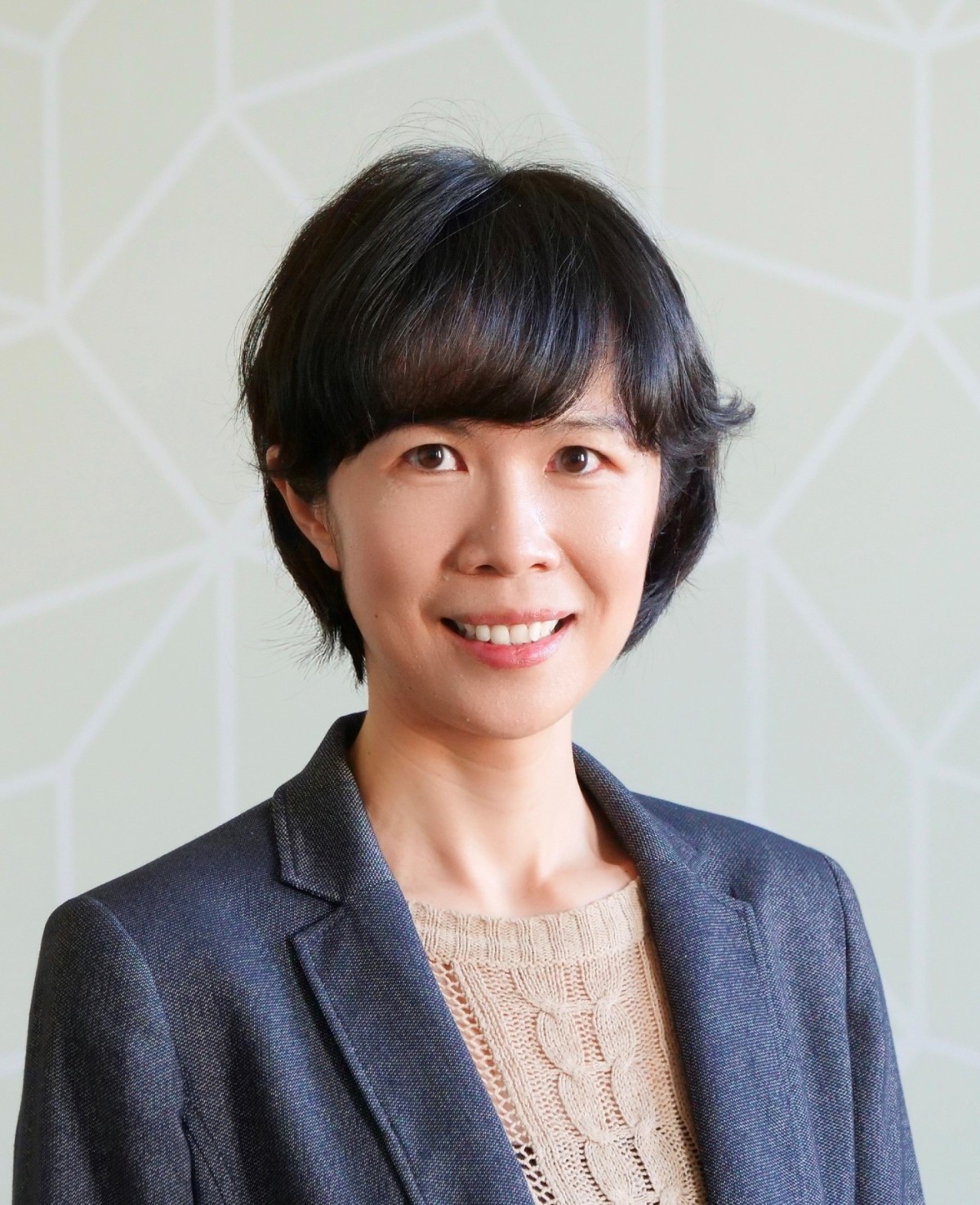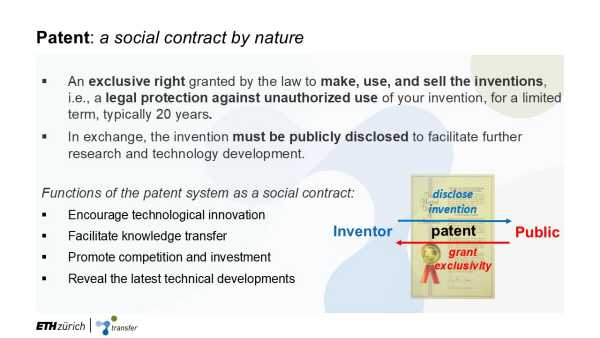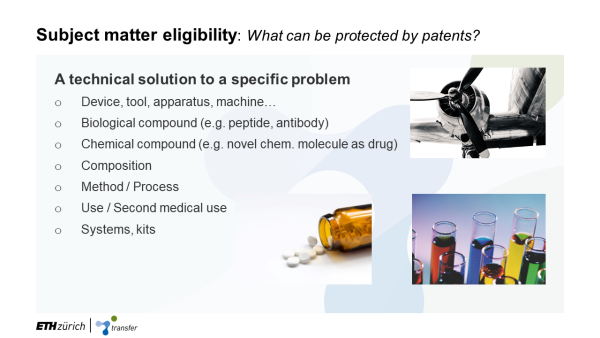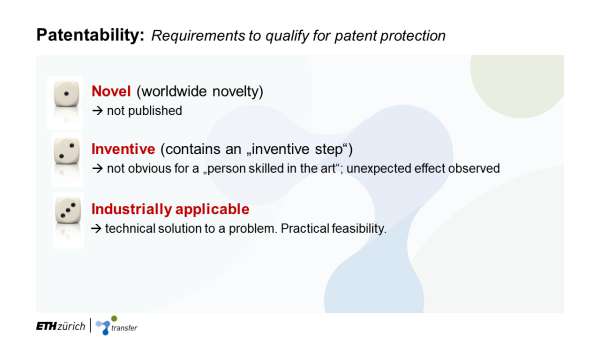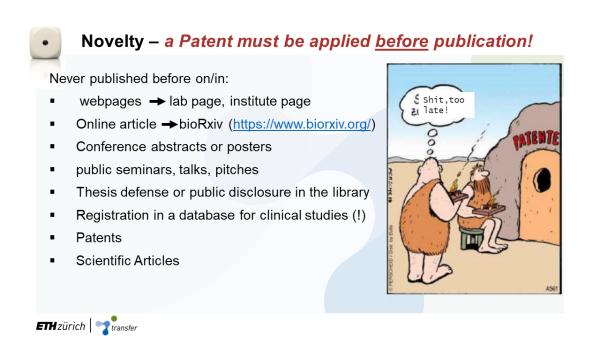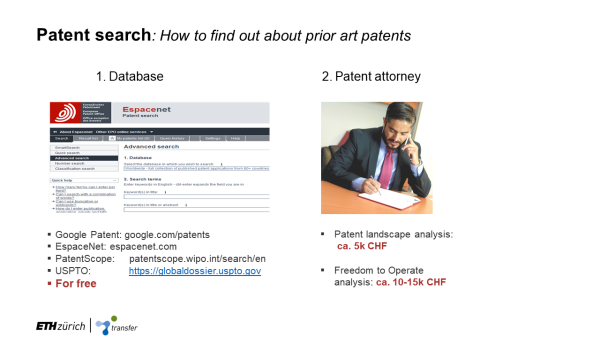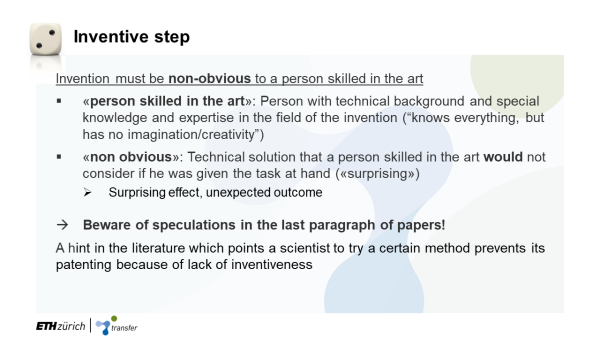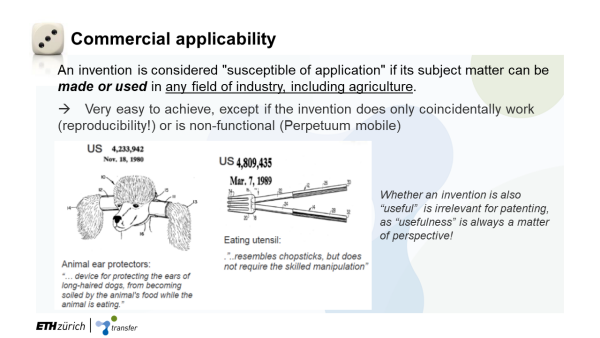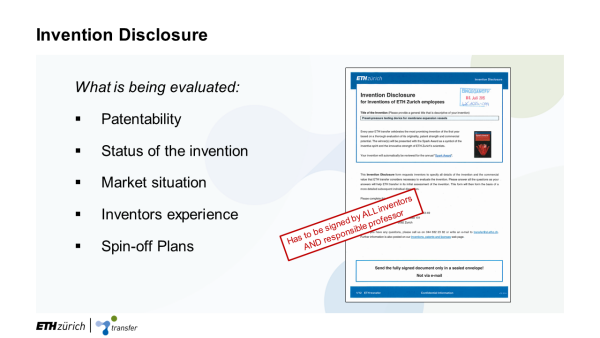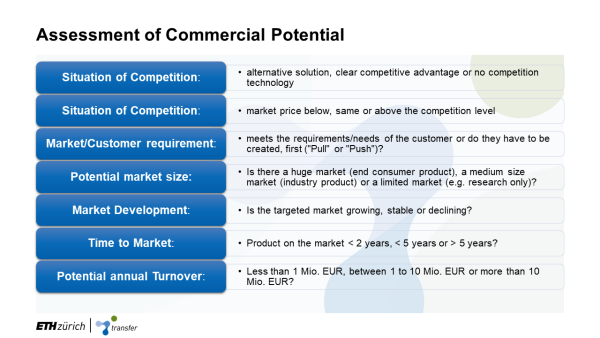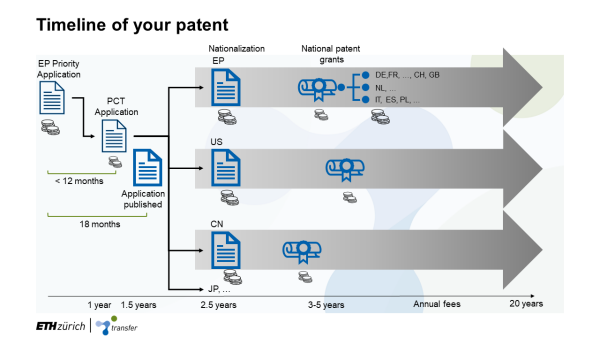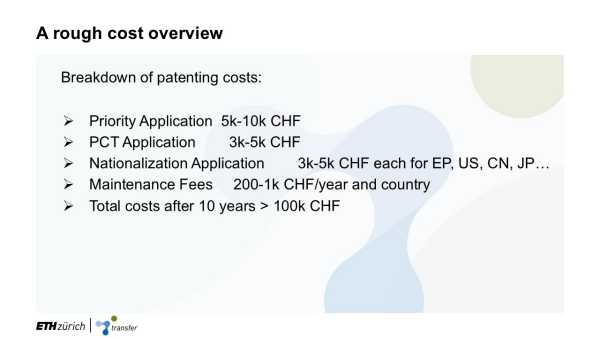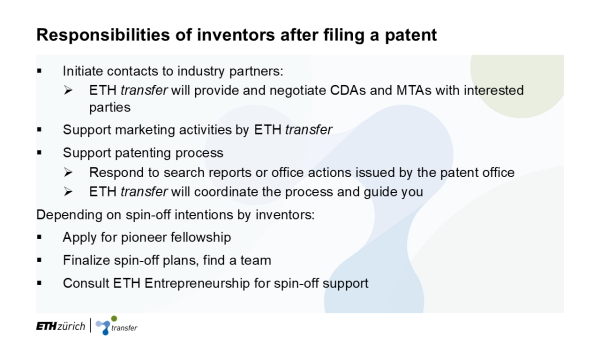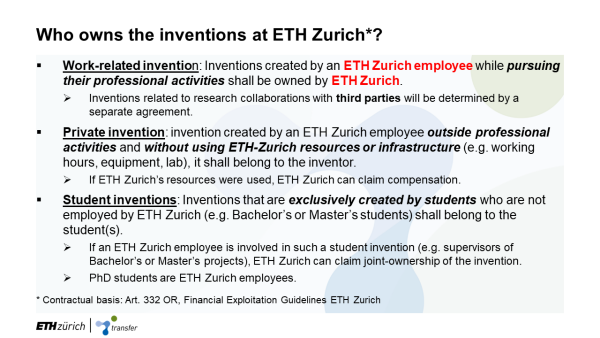Patenting an invention at ETH Zurich
As one of the most important forms of intellectual property rights, patent provides legal protection for inventions by granting patent owners exclusive rights to make, use, and sell their inventions for a limited period, typically 20 years, in exchange for publicly disclosing their inventions to facilitate further research and technology development. To qualify for patent protection, inventions must meet criteria including novelty, inventiveness, and utility and provide sufficient details to allow others to reproduce the work.
For university researchers, understanding patents is crucial for navigating existing knowledge landscapes and making informed decisions about protecting their own research innovations. Below we provide essential information about patents and patent management at ETH Zurich, presented as frequently asked questions and an accompanying slide deck. Please don't hesitate to contact us if you have any questions.
An invention uses technology to solve a specific problem. The invention can be a product, such as goods, tools, and materials, or a process, such as manufacturing processes and control procedures.
A patent is an intellectual property (IP) right to legally protect technical invention. A patent offers many benefits. It allows the patent holder to prevent others from using his/her invention for commercial purposes for up to 20 years. The patent holder can decide who is allowed to produce, sell or import the invention. The patent holder can also trade the patent, e.g. sell it or licence the use of the invention through a license agreement. In return for patent protection, the technical details of the invention must be disclosed to the public during patent application.
Patents may be granted for inventions of technical character, if the invention is new, involves an inventive step and has industrial applicability. There are some exceptions to patentability, however, mainly in the field of biotechnology and medical treatment. In many countries, software or procedures based on computer programs can be protected only if they contain further technical elements. This means that program-controlled equipment, procedures for production and control of procedures can be patented as a rule. In some countries, for example the US, the possibility of patent protection is broader. In any case, software is protected by copyright.
Inventors are the individuals who made a creative, original contribution to
the conception of a patented invention, for example, coming up with a novel idea that is part of the patented invention, or contributing to the core concept or technical solution described in the patent claims.
Carrying out experiments, building prototypes, or doing routine testing based on someone else’s idea does not count towards inventorship.
To patent, it is important that your invention is new. As a rule, you will know the scientific literature of your field very well, but what about the patent literature? You may consult various patent databases on the Internet in advance to find out whether patents already exist for inventions which resemble your own or concern a similar problem.
external page Espacenet
external page Swiss Institut of Intellectual Property
external page German patent office
external page US patent office
Further information and assistance on patent search can be found at ETH library.
The process begins when inventors, often including professors and researchers, formally disclose their invention to the ETH transfer - IP & Licensing Team by submitting the invention disclosure form. Upon receiving this form, the responsible technology manager evaluates the invention's potential for patenting and commercialization. If the initial assessment is positive, the case is reviewed by the Board of Technology Managers, who decide whether ETH Zurich will proceed with a patent application.
If the invention is approved for patenting, ETH Zurich covers the associated application costs. A patent attorney is then engaged to prepare the necessary documents, typically beginning with a European (EP) priority application, followed by an international (PCT) application, and eventually nationalization in selected countries, depending on commercial interest and market potential.
While the patenting process is underway, the responsible technology manager works with the inventors to explore opportunities to license the patent to external companies. If the patent is to be licensed to an ETH Zurich spin-off, the spin-off licensing managers will lead the process.
Revenue generated from patents is shared according to Download the ETH Zurich Exploitation Guidelines (RSETHZ 440.4) (PDF, 288 KB). Typicall, it is split equally between the inventors, ETH Zurich, and the professor’s lab.
For questions and more information regarding the patenting process at ETH Zurich, please consult the guidelines or the technology manager for your department.
Inventions made by employees of ETH Zurich
An invention belongs to ETH Zurich if it was made in the scope of official employment activities at ETH (service invention). This normally applies to inventions of doctoral students, scientific collaborators, assistants and professors, but not for students without an employment contract with ETH. Such service inventions must be filed in the name of ETH Zurich. The inventors are normally remunerated by the exploitation of such an invention.
If an invention was made in the course of a research project with industry, the research agreement stipulates the ownership to the results and the rights to use them.
To whom belong inventions of students?
ETH Zurich cannot claim inventions made by its students within the scope of their Bachelor or Master thesis (i.e. without being employed or paid). In the case of an employed co-inventor (e.g. a supervisor), both parties are joint owners. The students, however, may transfer their rights to ETH Zurich and will then be supported and remunerated on the same basis as ETH employees.
For more information regarding patent ownership at ETH Zurich, please refer to:
ETH transfer negotiates licensing contracts
The rights to commercial exploitation of a technology or software must be transferred from ETH Zurich to the company in question. This is usually done in the form of a license that allows the company to use the results in a specified way. The conditions for this use are laid down in a license agreement that is negotiated by ETH transfer. License agreements have to be approved by the Vice President for Knowledge Transfer and Corporate Relations.
Potential licensees and exploitation strategies
- The inventors develop their technology to maturity and exploit it by founding their own company.
- An independent company is sought which develops the product and then markets or sells it.
At ETH Zurich, the inventors participate in the income derived by ETH Zurich, for instance by licensing an invention or other intellectual property. The first revenues that ETH Zurich obtains will initially be used to cover the costs of patenting (e.g. for patent attorneys). The remaining income will, as a rule, be distributed as follows (subject to any financial claims by a third party):
- 1/3 to the inventor(s)
- 1/3 to the responsible professorships for further research purposes
- 1/3 to ETH Zurich to support research and technology transfer activities.
For more educational resourses on patents:
Your partners for IP education:
Your contact for patent training:
ETH transfer IP und Lizenzen
Rämistrasse 101
8092
Zürich
Switzerland
